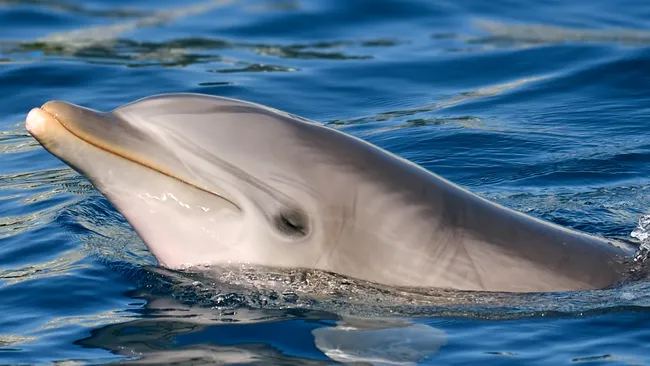A solitary dolphin in the Baltic Sea has been recorded talking to himself, leading researchers to wonder whether he’s lonely and calling out for friends.
A new study has revealed that a solitary bottlenose dolphin in the Baltic Sea has been producing an unexpectedly high number of vocalizations, potentially due to loneliness. Known as Delle, the dolphin was first spotted in 2019 near the Svendborgsund channel, south of Funen Island in Denmark, an area outside of the typical range for bottlenose dolphins. Since then, no other dolphins have been seen in the vicinity, making Delle’s behavior all the more intriguing.
Researchers, initially studying the effects of Delle’s presence on harbor porpoises, decided to deploy underwater recording devices. They were shocked to discover that the dolphin was making a remarkable number of sounds. Over a 69-day period between December 2022 and February 2023, the team recorded 10,833 sounds, including 2,291 whistles, 2,288 burst-pulses (rapid clicks that are often associated with aggression), 5,487 low-frequency tonal sounds, and 767 percussive noises. These sounds are typically linked to communication, even though Delle was alone.
One of the most striking discoveries was that Delle produced three distinctive whistles, known as signature whistles, which are unique to each individual dolphin, much like a name. If the researchers hadn’t known Delle was solitary, they might have assumed a group of dolphins was involved in social interactions. This led the researchers to speculate that the dolphin might have been trying to communicate with itself or, potentially, with other dolphins. However, given that Delle had been alone in the area for years, it seems unlikely he was expecting other dolphins to appear.
Cetacean biologist Olga Filatova, the study’s lead author, found the findings surprising. Initially, she expected only a few distant whistles, not the large variety of sounds that were recorded. While some of the sounds were potentially linked to hunting or environmental sensing, many were clearly communicative, suggesting a desire for social interaction despite Delle’s isolation.
Experts in dolphin behavior, like Thea Taylor from the Sussex Dolphin Project, weren’t entirely surprised by the dolphin’s vocalizations. Taylor explained that dolphins are highly vocal animals, using sound not only for communication but also for navigation and hunting. Still, the idea that Delle’s vocalizations might be emotional signals is particularly interesting. Filatova proposed that the sounds could be similar to how humans might laugh when alone, a kind of involuntary emotional expression.
The mystery of why the solitary dolphin is so vocal remains unsolved, but it opens new avenues for understanding dolphin communication and behavior, particularly in isolated individuals. The findings suggest that even solitary dolphins might have complex emotional and social needs, and that their vocalizations might be a way of coping with the absence of a pod. As researchers continue to explore these behaviors, the study raises important questions about the emotional lives of dolphins and how we might better understand their communication in the wild.
